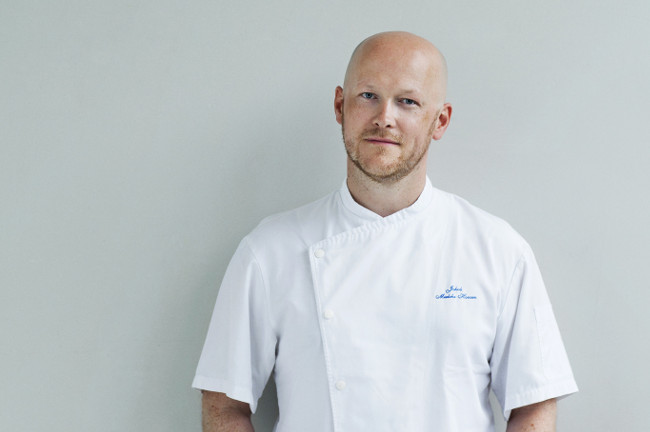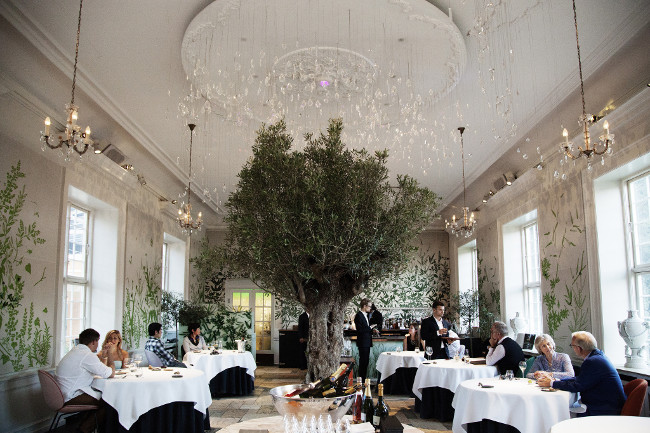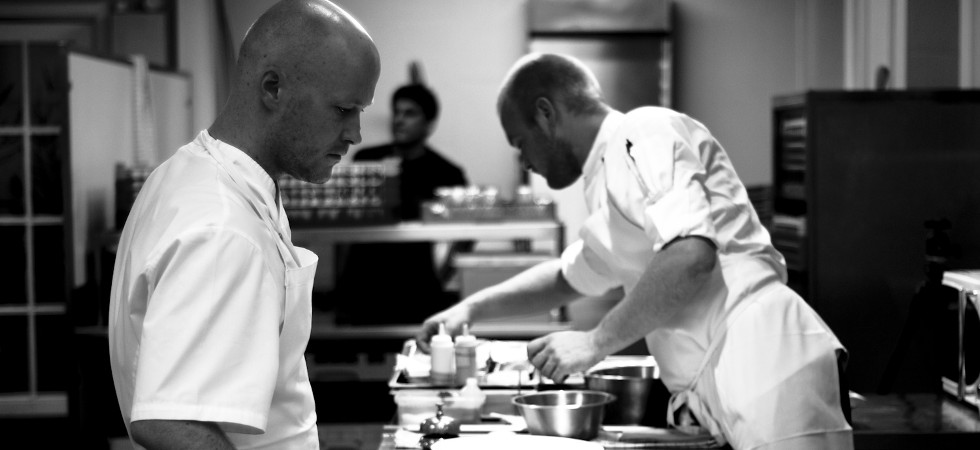Set in one of Copenhagen’s most beautiful royal gardens is Mielcke and Hurtigkarl restaurant. The Royal Danish Horticultural Garden Society provides a stunning backdrop for some innovative cooking.
The restaurant is a treat for all the senses, starting with the design and art on display including unique works by some of the most prominent artists and designers from Denmark.
The menu is seasonal and offers a gastronomic experience of several courses which vary depending on the diner’s time restrictions and there are many surprises along the way.
Owner and Executive Chef Jakob Mielcke is famous across the world and has developed a strong foodie following. He originally trained at Pierre Gagnaire in Paris and later at the Lecture Room and Library at Sketch in London. Jakob has been part of Masterchef for four consecutive seasons from 2014-2017 as both a judge and host. A meal here is memorable and will stay in the mind of the diner for some time.
We had the chance to sit down with Jakob to find out a little more about this culinary heavyweight.

1 – You are the Executive Chef and Owner of your restaurant, tell us how you got to this desirable place.
The opportunity occurred to take over the place in 2007. I had been working in Paris, London and Copenhagen and felt ready to settle and that this place was it. Luckily I still feel the same.
2 – The restaurant is located in the beautiful Danish Royal Horticultural Society’s Garden, how does the location influence the menus?
Working for big chefs in the 90ies 00oes you were a craftsman performing another chefs vision of food. Becoming the creative epicentre myself, I started a narrative from the garden that went through the door of the restaurant and into every detail in interior, sound and of cause the menu.
3 – You offer three types of menu at the restaurant, all available with wine pairing. You don’t actually display the menus on your website, why is this?
The 3 menus are different lengths of the same menu. The idea is to have a choice for the guests of HOW MUCH to eat. They might not have 4-5 hours to dine on a week day. We work with the guest to decide what the menu will be. This is also why we don’t display any menu description, as it tends to confuse more than it clarifies. We want the freedom to change courses every day when we want and only consider seasonality and availability of the best produce available to us.
4 – The restaurant’s design is as spectacular as the food, tell us about your choice in selecting such exciting pieces of art in keeping with innovative menus.
I needed help transforming the narrative into interior and design in order to create the menu from there. This was an exciting process as I couldn’t fall back on food and expressions I had done earlier. I think this is comparable to what Noma does when they go to Japan, Australia and Mexico. Setting a frame of reference from which they can create.
5 – You have probably read about the rise in ‘New Nordic Cuisine’, a term popular across the world. Why do you think people are so fascinated by this at the moment?
Any region that revisits its own gastronomical foundation, cutting out all unnecessary influence that has come along stands to gain tremendously. The expression of the chefs will be more pure and less conventional from that point. You see the same thing happening in many places around the world now.
6 – Where do you like to travel to for culinary inspiration?
Gastronomically I have a soft spot for Japan. Being a chef this makes sense, but also the culture and the aesthetics are mind blowing. New York is a very special city to visit for food, because so much is situated in such a ‘small’ place. I was blown away by a dinner with Dan Barber at Blue Hill at Stone Barns on my last visit.
7 – You were a judge on Denmark’s Master Chef television show. Tell us about how Danes are dining in 2017 and how their diets are evolving or changing, or not at all.
The last 10 years has been a long revolution in gastronomy. Obviously in high end restaurants but more interestingly in all the levels of restaurants, cafes and even take away. The younger generations go out more than before and value gastronomy a lot. 10 years ago the guests were here on expense accounts, now they are university students and all kinds of people.

8 – Tell us about some of the suppliers you are most excited about at the moment and why.
I might sound self centred but right now I think of our self as the most exiting one. I am a hunter and from the hunts I’m involved in we can sustain game on the menu for 5 months of the year. This approach of ‘forest to table’ is a real game changer for us.
9 – Nature and the natural environment are obvious within your restaurant. What sustainable measures are you most keen on?
We try to avoid the produce that are over exploited. As an example we only use line caught fish and focus on the types that are less known but equal or superior in quality to the common ones. We rarely have beef on the menu but when we do we use old dairy cows that we pay to get back on grass. Then they put on fat they are better than anything from the industry. And they are wasted normally.
10 – If you were to have breakfast, lunch and dinner in three different places around the world, where would those three meals be and why?
Breakfast near the cathedral in Hanoi eating Phô, lunch at L’arpege in Paris, dinner at Soujiki Nagahigashi in Kyoto.
Address: Mielcke & Hurtigkarl, Frederiksberg Runddel 1 2000 Frederiksberg, Copenhagen, Denmark / +45 38 34 84 36






















